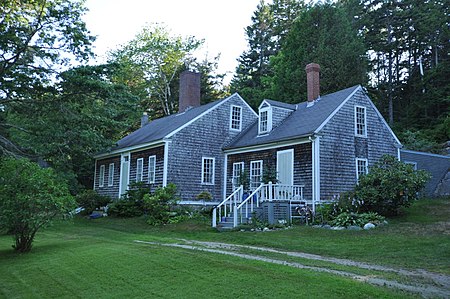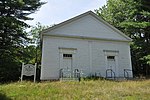Wallace-Haskell Homestead
1906 establishments in MaineHouses completed in 1906Houses in Sagadahoc County, MaineHouses on the National Register of Historic Places in MaineMaine Registered Historic Place stubs ... and 3 more
National Register of Historic Places in Sagadahoc County, MainePhippsburg, MaineUse mdy dates from August 2023

The Wallace-Haskell Homestead is a historic house at 268 West Point Road in Phippsburg, Maine. The house, a 1+1⁄2-story Cape, was the summer home of artist Ernest Haskell from 1906 until his death in 1925. It was originally built by William Wallace in 1810. The property was later run as a summer camp by Ernest's wife, and sheltered British children in the early years of World War II. The property was listed on the National Register of Historic Places in 2017.
Excerpt from the Wikipedia article Wallace-Haskell Homestead (License: CC BY-SA 3.0, Authors, Images).Wallace-Haskell Homestead
West Point Road,
Geographical coordinates (GPS) Address Nearby Places Show on map
Geographical coordinates (GPS)
| Latitude | Longitude |
|---|---|
| N 43.751388888889 ° | E -69.858888888889 ° |
Address
West Point Road 255
04562
Maine, United States
Open on Google Maps





